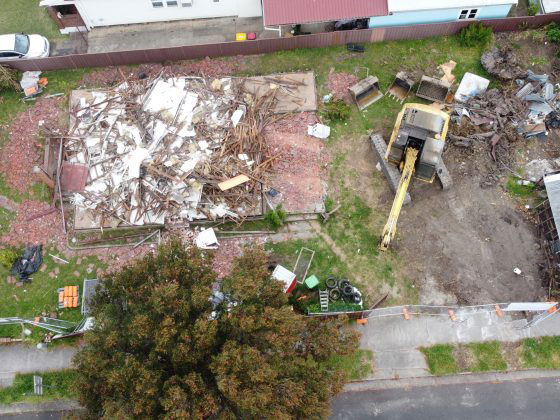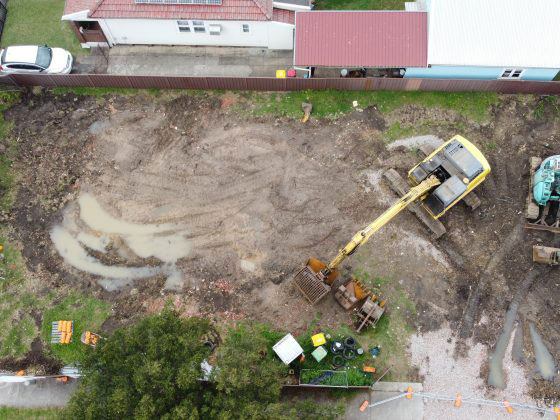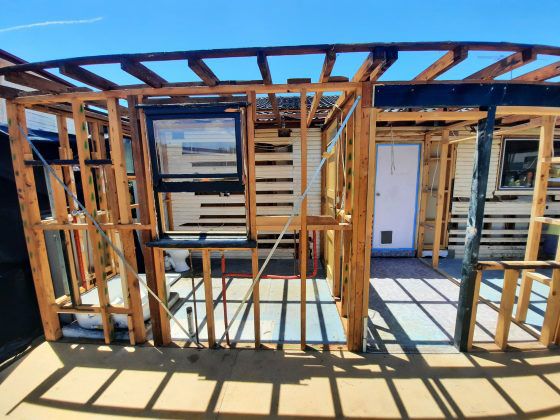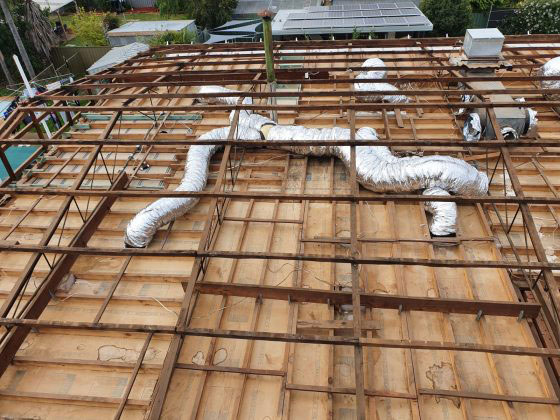Asbestos removal in Sydney varies from project to project based on several variables.
The several factors that can impact the cost of removing asbestos include:
- The amount asbestos present in your property will lead to an increase in price. The more asbestos, the longer the removal process will take and therefore, the more that will cost in the long run.
- The forms of asbestos that can be found varies to form sheets, large chunks, fibres, loose, and airborne dust. Loose or airborne dust is more difficult and laborious to remove. Due to this increase in difficulty of thoroughness to remove, it may cause price inflation.
- The condition of the asbestos also could increase the costs of the removal. Damaged asbestos can come with more hazards and potentially further complicate the removal process furthering a price rise.
- The location of the asbestos is another major factor that increase the cost of the removal. The easier the access to the asbestos, the cheaper the removal will be in comparison to a harder to access spot. For example, an exterior location such as external walls or standard roof is much easier than tight interior crawl space areas. Removing asbestos inside can also lead to further contamination of curtains, carpets and other textiles, so thoroughly protecting furniture and floor is essential.
Asbestos can be found in countless places around the house with the most common examples being in the bathroom, garage, kitchen and roofing. It was utilised in many household building materials and can be found as fibro walls, eaves, roofs and power switchboards.
If asbestos debris still present on your property after removal, the safety of the space depends on the nature of the asbestos. If the material is non-friable, as in asbestos that can’t be pulverised by hand pressure alone is unlikely to become airborne and pose health risk.
If the non-friable asbestos disposal on your Sydney property covers an area more than 10 metres squared, a clearance inspection is required under NSW Workplace Health and Safety Regulations. The clearance inspection will state whether a space is safe for unprotected individuals to reoccupy and reuse. It will also outline whether an assessor found no visible asbestos in or around the vicinity of the worksite. Disposing of more than 10 metres squared of non-friable and any friable asbestos in Sydney is illegal and can result in fines up to $7500 and the cost of cleaning up and disposing of the waste.
Some asbestos removal in NSW require additional airborne asbestos air monitoring to determine the safety of yourself and those around you. If the removal was of friable asbestos materials, as in asbestos that can be crumbled and reduced to powder by hand, then airborne asbestos monitoring ensures no loose fibres remain in the air and can display potential exposure. The monitoring checks the air for the presence of any loose fibres that could be present by pumping air through a filter that catches any particles on it. This is then examined under a microscope to determine whether the air quality is safe to breathe.
Can you Legally remove asbestos yourself?
You can legally remove less than 10 metres squared of non-friable asbestos yourself except for in the ACT (not in the work place). We strongly recommend seeking out professionals to do asbestos removal due to the significant health risks that asbestos pose.
If you considering the undertaking of DIY asbestos removal, these are some vital points to keep in mind:
- To undertake non-friable asbestos (asbestos that can’t be pulverised by hand pressure alone) removal as a non-licensed person, you must be considered a competent person. This means that you must have completed some training, have industry experience, and have the right equipment to complete the task safely.
- Even though you are legally able to remove as non-licensed individual, it still is a dangerous undertaking that can have a detrimental impact on your health and wellbeing.
- A licensed asbestos removal firm with a Sydney license is legally allowed to dispose of more than 10 square metres of asbestos. That is roughly the size of a bathroom or four sheets of asbestos wall sheeting so for many jobs a licensed asbestos removalist will be required for the job.
- There is a long list of tools that must not be used on asbestos contaminated materials such, brooms, high pressure water sprays, compressed air, and high speed tools such as grinders, sanders, saws, and high speed drills.
- There are strict recommended methods to remove asbestos as safely as possible which may cost more than hiring licensed professionals.
- Common insurance policies will not take any responsibility for work relating to asbestos, therefore, could be liable for all the expensive costs related to the clean-up.
Do you have to remove asbestos?
Asbestos isn’t necessarily a health hazard to live or work around when it is completely intact, most cases the asbestos and fibres do not pose a risk. However, if this changes and the asbestos is damaged or disturbed, the fibres could become airborne which significantly increases the danger present. The best control measure for managing asbestos is through eliminating the risk and one way to do that is through removal. It can also be substituted or isolated to reduce the risk through the application of engineering controls.
The majority of those who suffer from major asbestos related health issues tend to be exposed to the substance over long periods of time. For example, workers in factories that produce asbestos products are a prime example. However, this risk can be reduced through the appropriate use of personal protection equipment and reducing all possible risk.
Despite these points, it is always critical minimise the exposure of asbestos fibres and remove intact asbestos in a safe and responsible manner for the following two reasons:
- Asbestos materials do deteriorate over time and as they breakdown could release fibres in the air. These invisible fibres can remain within a household for years and when inhaled into your lungs may cause lung cancer and mesothelioma.
- If you are planning to renovate or remodel your home, removing asbestos first is essential. Renovation work can damage the asbestos or disturb existing asbestos causing the fibres to become airborne and pose further risks.
With these risks and various factors in mind, it is clear that contacting professional removal of asbestos is the safest option for you and your house. If you suspect your property contains asbestos, get in touch with our friendly team to organise an inspection today.
How do you safely remove asbestos?
The safest way to remove asbestos is to get in contact with a licensed asbestos removal company with a NSW license. Professionals have received extensive training and experience in risk minimisation when removing asbestos from residential, commercial, and industrial properties.
Our team of professionals will perform an extensive inspection of your property to make sure your property is safe, including airborne asbestos monitoring if necessary. Once we have collected the results, we can then organise an appropriate course of action. We utilise NATA certified labs with equipment that is state of the art to provide quick and accurate results.
If you would like asbestos in your property to be removed safely, please do not hesitate to get in contact with our friendly and experienced team. We make sure your health is our number one concern and we would be more than happy to answer any questions you may have about the entire removal process.



